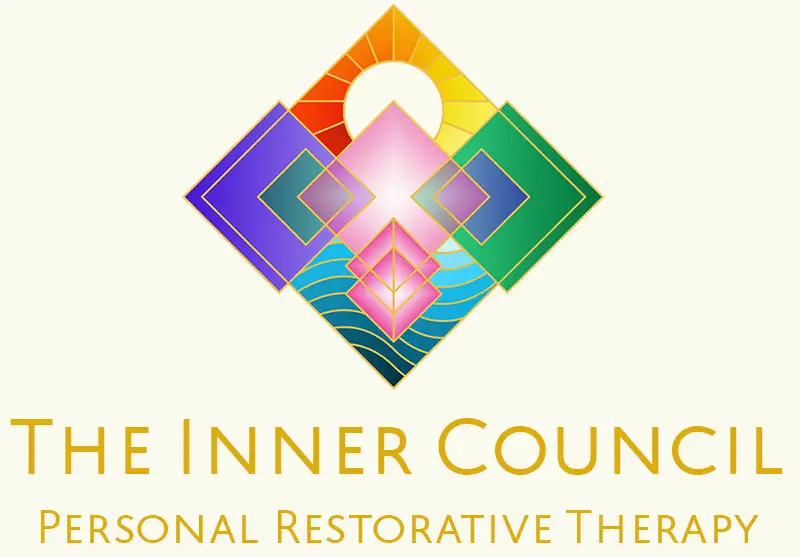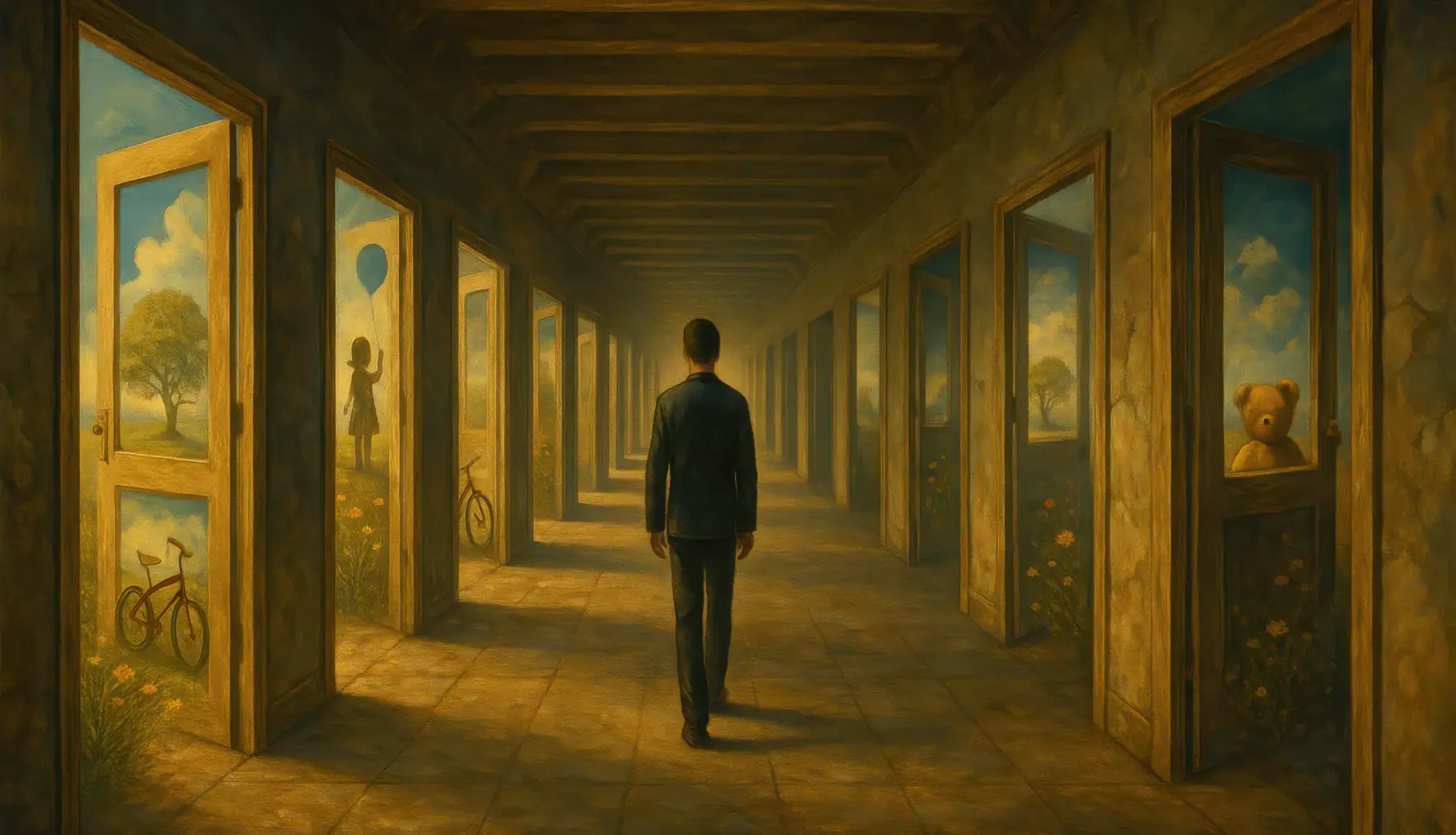BOOK YOUR WORKSHOP TODAY
All posts published here are presented as casual conversation pieces to provoke thought in some direction or another, they do not necessarily represent fixed opinions of the Inner Council, as our work exists beyond the spectrum of bound statement and singular clause.
A guide to aperception, perspectivalism and transparency—showing how evolving ways of seeing deepen Inner Child work, intuition and emotional healing.
Key Takeaways
- Inner Child work operates through aperception—a way of sensing that includes emotion, intuition and symbolic meaning.
- Perspectival reasoning sees only one angle, often dismissing or judging the child part as “irrational.”
- Transparency allows you to hold the adult self and child self at the same time, which is the basis of genuine healing.
- Emotional truth is non-rational, not irrational—its logic is symbolic, developmental and relational.
- Chaptering strengthens transparency by engaging active imagination and inner dialogue.
- Healing deepens when you shift from thinking
Aperception, Perspectivalism and Transparency in the Evolution of Consciousness
How evolving modes of perception illuminate the deeper layers of Inner Child work
Most approaches to healing assume that change happens through understanding, insight, analysis, and intellectual clarity. But some forms of transformation feel different. They arrive through intuition, imagery, symbolic meaning, emotional depth, and a kind of knowing that is impossible to express in linear terms.
Jean Gebser, the great philosopher of consciousness, offers a profound explanation: consciousness evolves through new ways of seeing, not new amounts of information.
Inner Child work, especially its intuitive and imaginal dimensions, makes perfect sense through this lens. What appears “irrational” or “childlike” is often evidence that a deeper perceptual mode is coming online.
To understand this shift, three of Gebser’s modes of perception are essential: aperception, perspectivalism, and transparency.
They reveal why Inner Child work feels so different from cognitive therapy, why imagination is central to healing, and why your emotional truth cannot always be grasped from a single viewpoint.
Aperception — Seeing With the Whole Psyche
Perception is what the senses register.
Aperception is what the whole self understands.
Where perception is surface-level, aperception includes:
- emotional meaning
- intuitive insight
- symbolic resonance
- somatic truth
- memory
- subtle recognition
This is the mode children naturally operate in.
They don’t just see what happens — they feel the world as a unified field.
Aperception is activated in Inner Child work the moment you sense:
- an inner younger self shrinking or calling out
- a memory that arrives with emotional temperature
- imagery appearing spontaneously
- a symbolic detail that “means more than it means”
- a sudden inner knowing
- a somatic shift that accompanies a truth
This is not fantasy.
It is the psyche communicating in its native language.
Chaptering (an Inner Child active imagination technique) uses aperception deliberately.
It guides the psyche into a mode where emotion, image, intuition, and memory can speak together.
Aperception makes Inner Child work feel alive, vivid, and meaningful — because it reaches the layers that cognition cannot.
Perspectivalism — The Limits of Reason Alone
Perspectival consciousness is the hallmark of the modern rational mind. It sees from a single angle:
- “I should be over this.”
- “My reaction isn’t logical.”
- “Why do I still feel this way?”
- “This emotion is wrong.”
The perspectival mode:
- isolates viewpoints
- prefers clarity over complexity
- judges emotional truth by rational standards
- dismisses intuition as “irrational”
- collapses paradox
- reduces the psyche to a single storyline
This stance is extremely useful for science, analysis, and planning, but profoundly limited for healing. When perspectival reasoning tries to manage the Inner Child, it often produces:
- self-criticism
- emotional minimisation
- disconnect from the body
- pressure to be “reasonable”
- inability to hold multiple truths
- conflict with oneself (“adult vs. child”)
From this mode, the Inner Child appears:
- dramatic
- confusing
- inconvenient
- immature
Because perspectival awareness cannot hold two layers of truth at once,
the child part feels “irrational.”
But emotional reality is not irrational — it is non-rational, which is very different.
It follows symbolic, developmental, and relational logic.
And the Inner Child can only be reached through a mode flexible enough to receive it.
Transparency — Seeing Through the Psyche Into Its Depth
Transparency is Gebser’s term for the perceptual mode of the integral consciousness.
It is a way of seeing that reveals:
- emotional truth and adult awareness at the same time
- the child-part and the present-moment self simultaneously
- symbolic meaning within ordinary experience
- the multi-layered nature of a conflict
- the root beneath the reaction
- the pattern inside the story
- the larger context inside the personal moment
Transparency allows multiple interior truths to coexist without collapsing into contradiction.
In transparent perception, you might suddenly recognise:
- “Yes, I’m irritated — and underneath, I’m scared.”
- “This anger is mine — and it is also a younger part asking to be protected.”
- “This reaction is about now — and also about then.”
- “My child-part is overwhelmed — and my present self is capable.”
Transparency holds complexity without needing to simplify it. It sees the psyche’s depth without losing the surface. This is the mode in which Inner Child healing accelerates. Because only transparency can hold:
- two ages of the self at once
- two truths at once
- emotional logic and adult logic together
- symbolic meaning and practical meaning together
Transparency is not mystical — it is clarity widened and deepened.
How Illness, Trauma, and Emotional Reactivity Look Through These Modes
From the perspectival mode, emotional pain looks like:
- a problem
- an obstacle
- a sign of immaturity
- something to fix or control
From the aperceptive mode, emotional pain looks like:
- a message
- an unmet need
- a symbolic echo
- a living part of the self
From the transparent mode, emotional pain looks like:
- a doorway
- a dialogue
- a layered truth
- a child calling from a specific moment in time
- a part returning to be integrated
Transparency makes the psyche readable. Aperception makes it feelable. Perspectivalism makes it analyzable.
Healing requires all three, but perspectivalism cannot heal what it cannot see.
Why This Matters for Inner Child Work
These modes explain why Inner Child work feels unlike any other form of therapy. It changes not just what we understand, but how we understand ourselves.
1. Inner Child work depends on aperception — sensing the inner world.
You cannot understand the Inner Child through analysis alone. You must feel the emotional vibration, the symbolic message, the somatic truth.
2. Perspectival reasoning limits healing — it sees from only one angle.
The rational mind judges the child part, dismissing its experience. This is why self-talk like “I shouldn’t feel this way” never works.
3. Transparency heals — it allows two truths at once.
Transparency lets you hold the adult self and the child self simultaneously, allowing compassion, attunement, and integration.
4. Chaptering works because it cultivates transparency and aperception.
The inner narrative opens, imagery appears, the psyche shows layered meaning. This is not imagination as escape — it is imagination as revelation.
5. These modes reflect the natural evolution of healing.
First we perceive. Then we feel. Then we see through. Healing unfolds in the same sequence.
6. Understanding these modes changes how you relate to yourself.
You no longer confuse “irrational” with “childlike” or “intuitive.”
You no longer expect the Inner Child to behave like an adult.
You recognise that your psyche has multiple layers of truth — all valid, all meaningful.
Inner Child work becomes less about controlling the self and more about seeing through the self with depth, compassion, and clarity.
Why This Emerges Now
We are living in a time when the limits of perspectival rationality have become impossible to ignore. For decades, many of us tried to understand emotional pain, trauma, identity, and relationship through a single lens—the rational, linear, analytical mind. But the psyche is multi-layered, symbolic, somatic, ancestral, imaginal, relational and intuitive. Asking a one-dimensional tool to heal a multidimensional being has left people feeling fractured, overwhelmed, and chronically misunderstood by their own minds.
“You cannot understand the higher dimensions of the psyche using only the rational mind. The rational mind is necessary, but it is not sufficient.”
— Ken Wilber, Integral Psychology
This is why so many forms of healing are rising simultaneously across the world. We see the return of somatic work, ancestral healing, intuitive perception, symbolic awareness, inner imagery, inner child dialogue, relational presence and even non-dual compassion. People are rediscovering practices that were once dismissed as “irrational” because they operate beyond the narrow bandwidth of perspectival thought. These approaches are not fringe—they are evidence that consciousness is reorganizing itself, preparing for a wider and more transparent way of seeing.
What looks like a cultural shift is actually a perceptual evolution. Individuals are awakening capacities that were dormant: the ability to sense through the body, to understand symbols, to witness the inner child, to feel the presence of memory and lineage, to hold multiple truths at once. These are all signs that the psyche is moving toward transparency—a mode of perception that can include logic without being confined by it.
We are not returning to something primitive. We are not abandoning rationality. We are ripening. The structures of consciousness that once served us are giving way to forms of awareness that are more integrated, more humane, and more capable of holding the complexity of the human experience.
A new way of seeing is emerging. One that is emotional, symbolic, intuitive and clear all at once. Inner Child work, imaginal exploration, somatic sensing and symbolic dialogue are not alternatives to growth; they are part of the next unfolding of consciousness. They are invitations into a way of knowing ourselves that rationality alone could never reach.
Companion Exercise — How to Practice Transparency With Your Inner Child
1. Sit with both hands on your heart and belly.
These two centers represent the adult (heart) and the child (belly).
Feel your breath move between them.
2. Say softly inside: “Both of us are here.”
Not “I am here.”
Not “my inner child is here.”
Both are present simultaneously.
This is the beginning of transparency.
3. Notice what each part feels like.
Without fixing or interpreting, sense:
- The adult’s perspective
- The child’s feeling
- The emotional “space” between them
Let them both exist.
4. Ask your Inner Child:
“What are you feeling right now?”
Let the first true sensation arise—image, emotion, memory, body feeling.
5. Then ask your adult self:
“What do I understand about this?”
Hold both answers without choosing which is “correct.”
6. Imagine a gentle light surrounding both parts.
This light represents transparent awareness—
the ability to hold two truths at once.
7. End with:
“I can see you, and I’m here with you.”
Transparency does not require solutions—only presence in two directions at once.
And visit our Inner Child Workshop page for more information.
Further Insights & Inner Frameworks

A lantern held in gentle hands illuminates the small child within its light, symbolizing aperception—seeing not just the surface of experience, but the inner world with clarity and compassion.
The Two Ways of Seeing: Looking At vs. Seeing Into
Modern consciousness is built on looking at experience — observing it from the outside, analysing it, measuring it, naming it. This is the strength of the rational, perspectival mind. But the psyche heals through a different mode of vision: seeing into. This form of perception moves beneath surface behaviour into the emotional, symbolic and relational layers that created it. When you “see into” a reaction, you sense the younger self behind it; when you “see into” a memory, you recognise the meaning it still carries; when you “see into” conflict, you notice the vulnerability beneath the defence. Healing often begins the moment we shift from judging what we see to seeing the depth of what is being expressed. Looking at organises information. Seeing into reveals the truth.
Suggested Reading
Jean Gebser — The Ever-Present Origin
The foundational text on structures of consciousness. Dense but essential for understanding aperception, perspectivalism, and transparency. Gebser outlines how different modes of perception shape human experience across history.
Ken Wilber — Integral Psychology
Wilber synthesizes Eastern and Western developmental models, explaining why a single level of consciousness (the rational mind) cannot address the full spectrum of psychological experience.
James Hillman — The Soul’s Code
Explores symbolic perception, imaginal intelligence, and the inner child as an archetypal presence. Beautifully complements aperception and transparency.
Douglas Rushkoff — Present Shock
A contemporary look at how modern perspectival consciousness collapses under overload, and why new modes of awareness are emerging in response.
Iain McGilchrist — The Master and His Emissary
Although not explicitly Gebserian, McGilchrist’s exploration of hemispheric perception mirrors the shift from narrow rationality to broader, integrative awareness.
Stanislav Grof — Psychology of the Future
Grof describes consciousness as multi-layered, symbolic, and transpersonal. His model supports the idea that healing requires more than rational analysis.





